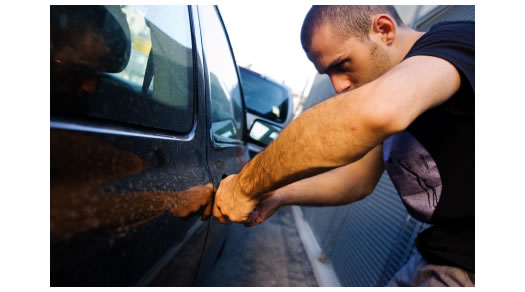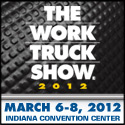
| Monday, December 05, 2011 | Archives | Advertise | Online Buyer's Guide | FLEETSolutions |
Telematics: One More Reason To Not Steal From Fleet
 For the Turlock Irrigation District in California the knowledge that, to a car thief, a vehicle is a vehicle is not a pleasant one to dwell upon. Fortunately, one man's GPS system is another man's Lo-Jack in a pinch. Three of the irrigation district’s vehicles stolen during the past five years had been equipped with fleet management technology, said NAFA Member Jason Hicks, CAFM, Operations Manager for the district. For the Turlock Irrigation District in California the knowledge that, to a car thief, a vehicle is a vehicle is not a pleasant one to dwell upon. Fortunately, one man's GPS system is another man's Lo-Jack in a pinch. Three of the irrigation district’s vehicles stolen during the past five years had been equipped with fleet management technology, said NAFA Member Jason Hicks, CAFM, Operations Manager for the district. The publicly owned irrigation district — responsible for supplying irrigation water and electricity to homes, businesses, and farms in California’s Central Valley — has equipped its 300-vehicle fleet with GPS units so that data from the vehicle can be relayed back to the managers and employees who are responsible for tracking the fleet’s whereabouts. The system, a cloud-based telematics solution called GeoManager, helped the district and law enforcement recover the stolen vehicles. "We can provide law enforcement with a stop sequence of everywhere [the thief] stopped that vehicle while it was in their possession," Hicks said, noting that district officials had been able to go online to track and locate the vehicles in real-time using the telematics. Turlock’s irrigation district provides services to nearly 5,000 customers and covers 150,000 acres, so the online platform assists with managing driver safety, customer service, back office administration, fuel use, and overall fleet efficiency according to Trimble, the company behind GeoManager. Not every manager and employee is able to view the entire fleet on the Trimble system. In all, Turlock’s irrigation district is divided into fifteen different groups within the platform. Since the technology has multiples uses, the different groups can perform different tasks on the platform and may have limited access to what they can see at a given time. For example, managers in charge of staff resources use the technology for supervisory management to ensure that fieldworkers are in the right location, at the right time, and are doing their required job tasks, Hicks said. District employees responsible for reading electricity meters use the platform’s mapping capability to review traveled routes and to ensure that no two employees’ routes overlap. The mapping also helps employees avoid driving routes that are longer than necessary. Employees responsible for managing the district’s electric grid use the technology daily to locate the vehicles nearest to a customer call for service. For Hicks, the fringe benefit of using the system as a tracking device after theft was an afterthought. "That never entered the picture when the idea of using Telematics was decided. It has become an unexpected side benefit. However, it is now fresh in our minds to go to it, if or when it happens." The only remaining difficulty is when you find the vehicles and, perhaps, wish you hadn't. "In two cases, the vehicles were recovered undamaged," Hicks said. "The third case, the vehicle was driven into a lake, so it was totaled...recovered, but totaled." |
 |
NAFA Fleet Management Association 125 Village Blvd., Suite 200 Princeton, NJ 08540 Telephone: 609.720.0882 Fax: 609.452.8004 |








